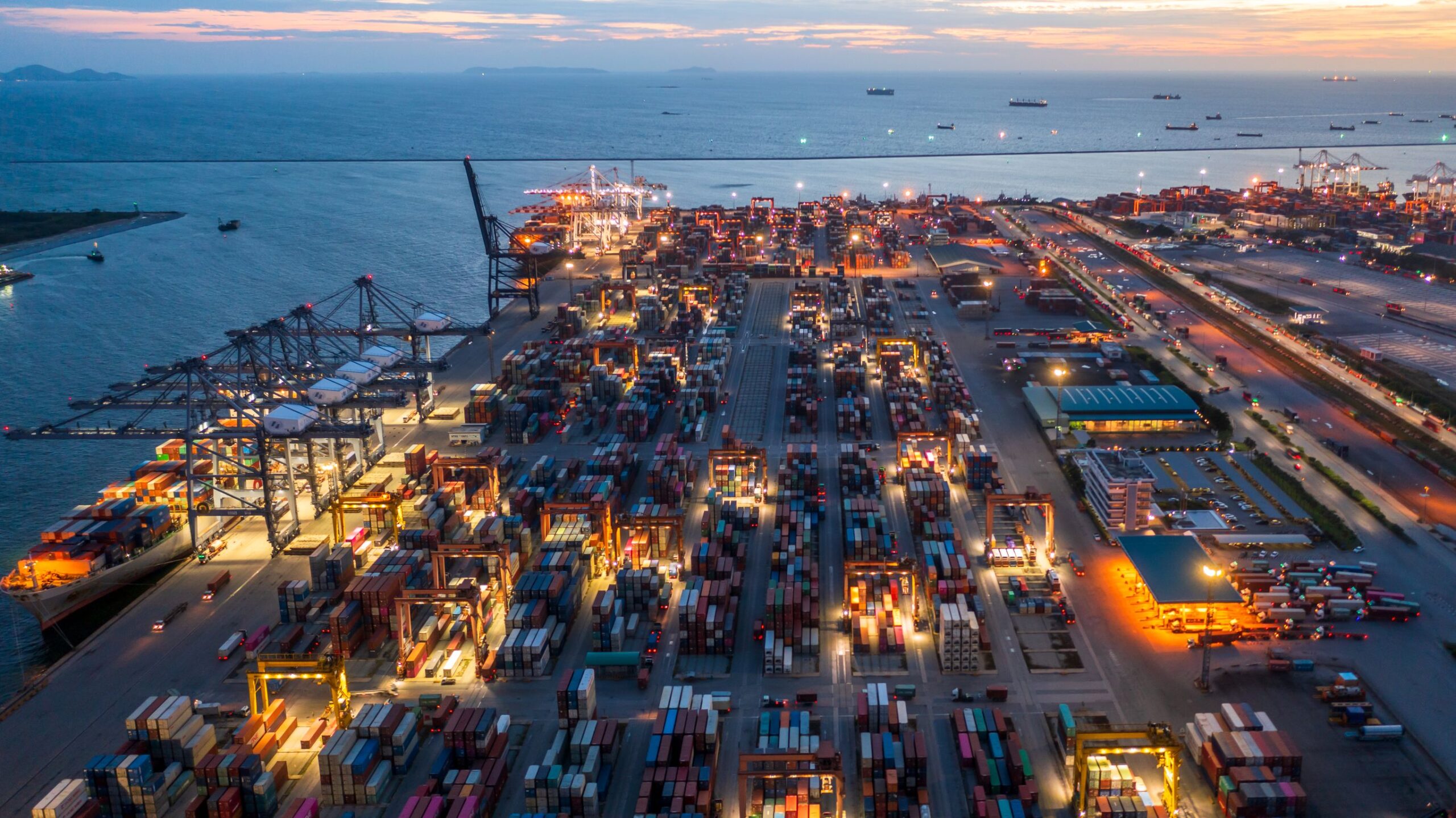Global freight forwarding is undergoing a transformative shift. As logistics operations become more complex and international supply chains expand, companies are seeking integrated multimodal freight solutions that provide speed, flexibility, and control across air, ocean, rail, and ground transportation. The ability to manage multiple modes of transit through a unified strategy is no longer just an advantage—it’s a necessity.
For forwarders like LCX Freight, the rise of integrated multimodal logistics is redefining what it means to provide world-class service. This model delivers more efficient routing, reduces handling times, and offers enhanced shipment visibility—all under the strategic umbrella of global freight forwarding.
In this article, we’ll explore how multimodal integration is reshaping the logistics industry, why it matters for international shippers, and how LCX Freight is meeting this challenge head-on with tech-driven, scalable freight solutions.
What Is Multimodal Freight in Global Freight Forwarding?
Multimodal freight involves the transportation of goods using two or more different modes—typically combining air, ocean, rail, and trucking—but managed under a single contract and unified control system. This is different from intermodal transport, where each segment is treated independently with separate handling and documentation.
By integrating these transport modes into a cohesive strategy, forwarders can offer:
- Reduced transit times
- Improved cargo safety
- Smoother customs clearance
- Better cost control
- Single-source visibility
For clients involved in global freight forwarding, this approach simplifies complex international movements while ensuring flexibility in response to disruptions.
Why Global Freight Forwarding Needs Integrated Multimodal Solutions
The logistics industry is more volatile than ever. From geopolitical instability to climate events and port congestion, supply chains face constant pressure. To remain competitive, companies need logistics partners who can dynamically shift routing, blend transport options, and manage everything in one seamless process.
Here’s why multimodal integration is at the core of modern global freight forwarding:
1. Speed + Cost Optimization
Relying solely on air freight is costly, while ocean freight is slower. Combining modes—for instance, using rail from inland China to Europe followed by air from a regional hub—creates a balance between urgency and budget.
2. Real-Time Visibility
Integrated multimodal systems offer centralized tracking across all legs of the journey. Clients get a unified dashboard showing where their shipment is, regardless of transport mode or location.
3. Risk Management
If a port experiences congestion or an airport closes, forwarders can quickly reroute cargo through alternate channels, minimizing delays. Flexibility is baked into multimodal models.
4. Environmental Responsibility
Blending transport methods allows for smarter, lower-emission routing options. For example, using ocean and rail over long distances and trucks only for final-mile delivery helps reduce a shipment’s carbon footprint.
5. Regulatory Efficiency
By managing everything under one contract and compliance strategy, multimodal logistics streamlines documentation and helps avoid customs errors—critical in global freight forwarding.
How Technology Enables Smarter Multimodal Logistics
Multimodal freight forwarding would be impossible without digital integration. Technology is the linchpin that connects each mode and stakeholder—creating a unified, transparent, and responsive supply chain.
Key Technologies Powering Multimodal Solutions:
- Transportation Management Systems (TMS): Coordinate carrier selection, routing, and delivery confirmation across multiple transport types.
- Digital Freight Platforms: Connect shippers with real-time rates and booking options across modes.
- IoT Sensors & Telematics: Enable cargo monitoring during transitions from ship to truck to rail.
- AI & Predictive Analytics: Forecast delays and suggest alternate routing.
- API Integration: Syncs forwarders’ systems with airlines, ports, customs, and trucking networks to share live updates.
At LCX Freight, these tools are leveraged to support a cohesive global freight forwarding strategy that adapts to disruptions and scales with demand.
When Multimodal Logistics Delivers Real Value
Not all shipments are the same, and global freight forwarding requires a custom-tailored approach depending on origin, destination, cargo type, and urgency. Here are some scenarios where multimodal integration provides measurable value:
Time-Critical Deliveries
When a shipment must arrive within 48 hours but originates far from an international airport, combining express trucking + air freight ensures compliance with tight timelines.
Temperature-Sensitive Goods
Perishables or pharmaceuticals benefit from multimodal cold chain logistics—truck to port, reefer container by sea, then final-mile reefer delivery—all temperature-controlled and monitored.
Electronics and High-Value Cargo
Moving tech goods from Asia to the U.S. via air, followed by secure trucking and bonded warehousing, reduces theft risk and shortens time to market.
E-Commerce & Omni-Channel Fulfillment
Blending ocean and rail for inbound freight, with domestic trucking for regional fulfillment, ensures lower costs and faster delivery for e-commerce brands.
Market Stats Supporting Multimodal Trends
Global data confirms the growing demand for multimodal capabilities within global freight forwarding:
- According to Allied Market Research, the multimodal logistics market is projected to reach $36 billion by 2032, growing at a CAGR of 6.8%.
- A report by McKinsey shows that logistics firms with integrated multimodal capabilities outperform their competitors by up to 20% in delivery speed and customer satisfaction.
- In a 2025 Freightos survey, 72% of shippers said they would switch to providers offering unified tracking across multiple transport modes.
These figures show that the market is rewarding forwarders who can offer streamlined, integrated logistics solutions.
LCX Freight’s Approach to Global Multimodal Logistics
At LCX Freight, we understand that modern supply chains don’t move in straight lines—they require flexibility, adaptability, and visibility across every mode of transport.
Our approach to global freight forwarding emphasizes:
Unified Coordination
From origin to destination, we manage every leg of the journey—air, ocean, rail, and road—under a single, accountable logistics plan.
Smart Routing
We blend cost-effective routing with fast delivery, helping you meet customer demands without overspending.
Regulatory Support
We handle customs clearance, bonded warehousing, and international compliance across all transport segments.
Real-Time Visibility
Our digital tools let clients track multimodal shipments in one place, with proactive alerts and delivery confirmations.
Dedicated Support
Our team coordinates with global carriers, terminals, and warehouses, ensuring cargo moves with speed and precision across modes and borders.
This multimodal expertise enhances our core mission as a global freight forwarding company built to solve complex logistics challenges.
How Multimodal Freight Reduces Supply Chain Risk
In an era of disruptions—from port strikes to political instability—resilience is key. Multimodal logistics strengthens your supply chain in several ways:
- Diversification: If one mode or route is blocked, others are immediately available.
- Speed Adjustments: Urgent cargo can switch mid-journey to faster transport.
- Buffering: Warehousing in intermediate hubs offers flexibility if demand shifts.
- Compliance Continuity: Documentation and security standards remain consistent across modes when centrally managed.
For clients navigating volatile markets, multimodal logistics is a strategic hedge against disruption.
The Future of Global Freight Forwarding Is Multimodal
Looking ahead, the most successful logistics providers will be those that can orchestrate complex, multimodal supply chains with precision, speed, and intelligence. Global freight is becoming too unpredictable and fragmented to be managed through single-mode solutions.
Key Future Developments:
- Digital twins to simulate cargo movement and optimize future loads
- Carbon calculators to select eco-efficient routes across modes
- Blockchain-based documentation to improve customs visibility
- Warehouse automation synced with multimodal arrivals and departures
LCX Freight is investing in these next-gen capabilities today to future-proof your global supply chain.
Conclusion: Building Smarter Global Freight Forwarding with LCX Freight
Multimodal integration is transforming the world of global freight forwarding. It offers a smarter, faster, and more resilient approach to logistics—something that every modern shipper demands.
At LCX Freight, our mission is to simplify global trade through intelligent logistics solutions that span the full multimodal spectrum. Whether your cargo moves by sea, air, rail, or road—or all of the above—we bring it together into one seamless journey.
We don’t just move freight—we move global commerce forward. Contact Us Today!




